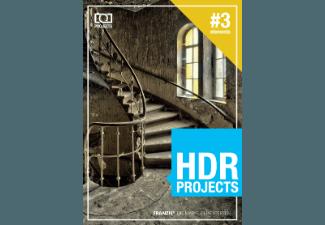

- #HDR PROJECTS ELEMENTS DOWNLOAD MANUAL#
- #HDR PROJECTS ELEMENTS DOWNLOAD FULL#
- #HDR PROJECTS ELEMENTS DOWNLOAD PC#
Sometimes this may be listed in your TV or display settings as "HDMI Deep Color" or "Enhanced Format." Refer to your display's manual if you're unsure. Refer to your display's manual if you're unsure.Įnsure that the TV port is HDR enabled. Not all HDMI ports may accept HDMI 2.0 and HDR. (HDMI 1.4 may work, but may have issues displaying the content.) Make sure that your system is connected to the HDR display using a high-speed HDMI 2.0 cable so that you can take advantage of the transfers speeds. The following are some things to consider when you're running through your setup process:
#HDR PROJECTS ELEMENTS DOWNLOAD PC#
With the many different types of displays and TVs that are available, along with console and PC considerations, you may find that you need to use a specific piece of hardware or change a setting to get It is recommended to use a value of 1.5 or 2. This adjusts the brightness of the composited UI. When set to 1, this enables HDR UI composition, which attempts to preserve LDR visuals and blending. Once you've setup the Blueprint or C++ call for GameUserSettings, you can run any cooked project, use the command line argument -game mode, use Standalone game mode, or Play-in-Editor (PIE) in a new window usingĮxclusive fullscreen (press Alt + Enter or use the command fullscreen from the console window). This is the color gamut of the output display. This is the device format of the output display When set to 1, this recreates the swap-chain and enables HDR output. Takes values 0 (disabled) and 1 (enabled). ODT to be matched against (eg Rec709, Rec2020, DCI-P3, etc.).Ĭreates an HDR compatible swap-chain and enable HDR display output on platforms that supports it. Because of this, each target requires its own Output Device Transform (ODT) - Finally, this takes the HDR Data output of the RRT to then match it with the different devices and color spaces they can display. In this process, it enables the rendered images to not rely on a specific displayĪnd, instead, can ensure a larger gamut and dynamic range that is correct for the specific display it's being output to, including ones that have yet to be created. Reference Rendering Transform (RRT) - Then, this part takes the scene-referred color values and converts them to display-referred. Look Modification Transform (LMT) - This part of the process takes the ACES color-encoded image that has had a creative "look" (color grading and correction) applied to it and then outputs the images rendered withĪCES in combination with the Reference Rendering Transform (RRT) and an Output Device Transform (ODT). The ACES Viewing Transform works in the following order in the viewing pipeline: Instead, the display being output to maps it to the Scene-referred images maintain the original linear light values of the source materials without limiting the exposure range.ĭisplay-referred is the final image transformed into the color space of the display being used.īy using this pipeline, the original source files do not have to be edited each time they are used with a different display in order to guarantee correct coloring.

This process works by using scene-referred and display-referred images.
#HDR PROJECTS ELEMENTS DOWNLOAD FULL#
With the current implementation, the full processing of the rendered scene is handled through what is known as the ACES Viewing Transform. It is impossible to convey HDR differences on an LDR screen. This example is simulated and purely for demonstration purposes only.


 0 kommentar(er)
0 kommentar(er)
